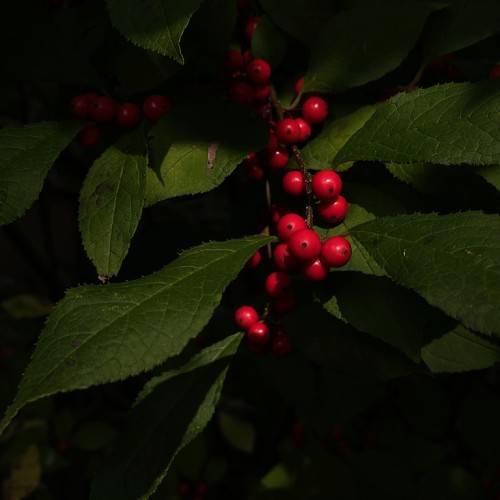
winterberry
Ilex verticillata
Cycle:
Perennial
Watering:
Frequent
Hardiness Zone:
3 - 9
Flowers:
Flowers
Sun:
Full sun,part shade
Soil:
Sandy Loamy Clay Humus
Fruits:
Fruits Ready In Fall
Edible:
Yes
Leaf:
Yes
Growth Rate:
Low
Maintenance:
Low
Drought Tolerant:
Yes
Salt Tolerant:
Yes
Care Level:
Medium
watering
Winterberry plants should be watered regularly throughout the growing season. A general rule of thumb is to give the plant about an inch of water per week. Water slowly and evenly over the root system, ensuring that the water penetrates deeply into the soil. Do not allow the soil to become overly wet, as this can cause root rot. Winterberry plants thrive in slightly moist, well-drained soil, so you may want to adjust your watering schedule accordingly if you find that the soil is consistently wet. In periods of prolonged drought, you should water more frequently to make sure that the plant receives an adequate supply of moisture. Additionally, mulching around the root system can help to retain soil moisture.
sunlight
Winterberry plants (Ilex verticillata) require at least 4 to 6 hours of direct sunlight each day for best performance. These plants cannot tolerate long periods of shade, as they require direct sun for optimal growth and health. The best time of day to provide sunlight is morning hours, as the plant's foliage will become overheated in scorching afternoon sun. In Northern regions, midday sun exposure may be sufficient as days become shorter in the fall and winter months. Winterberry plants may also adapt to light filtered by trees or shrubs throughout the day, which may be necessary for gardeners in warmer climates.
pruning
Winterberry (Ilex verticillata) should be pruned twice a year: in late winter or early spring and then again in late summer or early fall. In late winter/early spring, prune any dead wood that is present and lightly shape the plant. In late summer/early fall, prune the plants to maintain the desired size and shape. It is best not to prune too much of the old wood as this can reduce the amount of berries the plant produces. If more drastic pruning is needed, only remove 1/3 of the old wood at 1 time.
